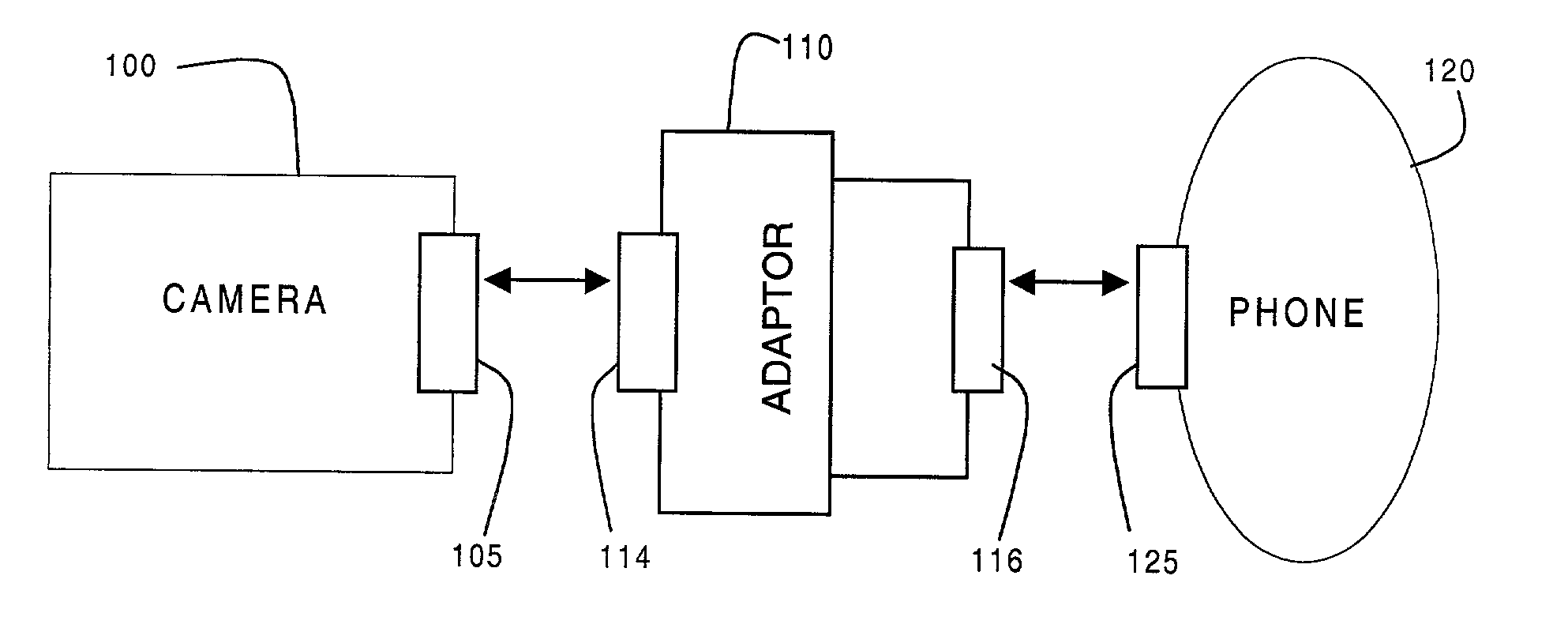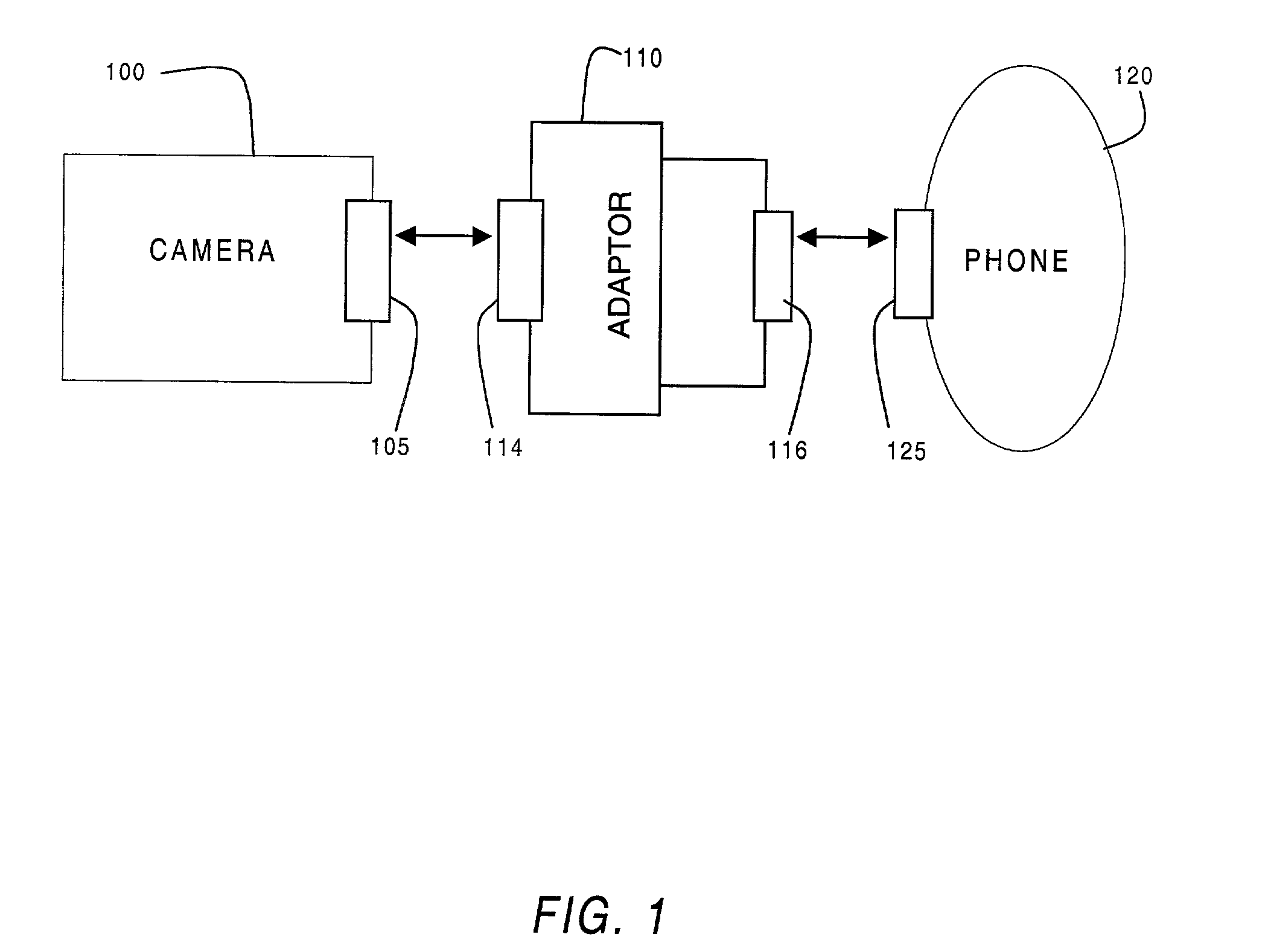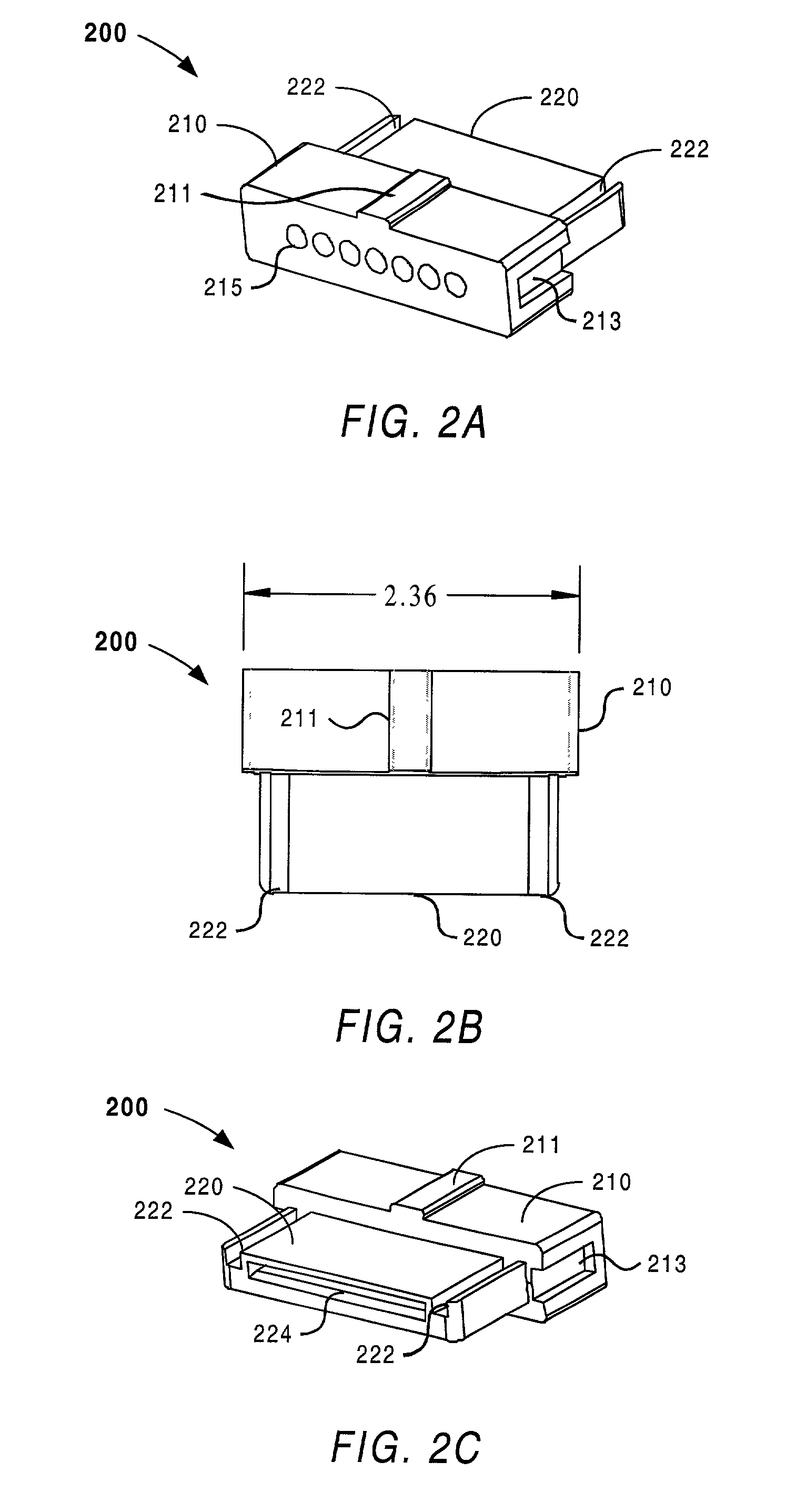Versatile adaptor device and manufacturing process for connecting a client device to various host devices
a manufacturing process and adaptor technology, applied in the direction of coupling device connection, transmission, substation equipment, etc., can solve the problems of limited physical (hard-wire) connection, inconvenient use of physical connection by many digital camera users, and limitation of the use (and usefulness) of digital cameras, so as to improve cost effectiveness and improve visual mating
- Summary
- Abstract
- Description
- Claims
- Application Information
AI Technical Summary
Benefits of technology
Problems solved by technology
Method used
Image
Examples
Embodiment Construction
[0044]The following description will focus on the presently preferred embodiment of the present invention in the environment of a digital camera connected to a data-capable cellular phone. The present invention, however, is not limited to any one particular application or any particular environment. Instead, those skilled in the art will find that the device and methodology of the present invention may be advantageously embodied in a variety of different environments where devices having potentially many different connectors / plugs (e.g., from different manufacturers) are connected together. Therefore, the description of the exemplary embodiments that follows is for purposes of illustration and not limitation.
I. Adaptor Device and Manufacturing Process for Connecting a Wireless Client Device to Various Host Devices
[0045]A. Overview
[0046]Cellular phones are designed to operate independently in receiving and transmitting voice messages, without depending upon a connected client device....
PUM
 Login to View More
Login to View More Abstract
Description
Claims
Application Information
 Login to View More
Login to View More - R&D
- Intellectual Property
- Life Sciences
- Materials
- Tech Scout
- Unparalleled Data Quality
- Higher Quality Content
- 60% Fewer Hallucinations
Browse by: Latest US Patents, China's latest patents, Technical Efficacy Thesaurus, Application Domain, Technology Topic, Popular Technical Reports.
© 2025 PatSnap. All rights reserved.Legal|Privacy policy|Modern Slavery Act Transparency Statement|Sitemap|About US| Contact US: help@patsnap.com



